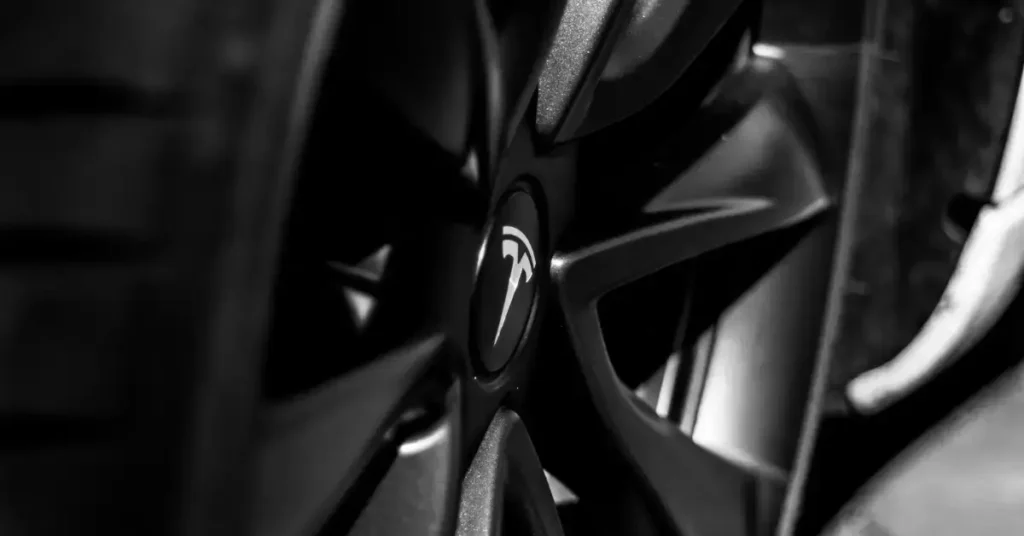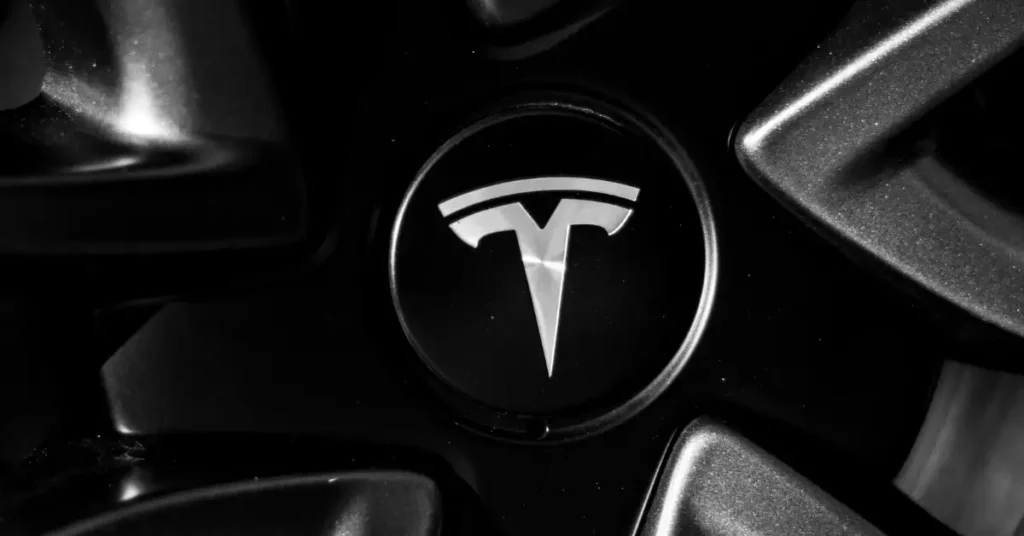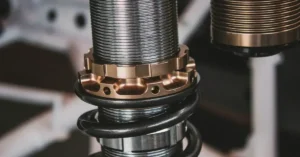When it comes to Tesla Model Y tire pressure, it’s important to understand the impact it can have on the vehicle’s performance and safety. Elon Musk projects a future where electric vehicles will become the norm, and the Tesla Model Y is one of the most popular EVs on the market. Proper tire pressure is essential for maximizing the Model Y’s range and handling.
Table of Contents
Tesla Tire Pressure Model Y
Maintaining the correct tire pressure is crucial for several reasons. First, it ensures that the vehicle is operating efficiently, which can translate to better fuel economy and reduced emissions. Second, it helps to ensure that the vehicle handles properly and is safe to drive. Finally, maintaining the correct tire pressure can help to extend the life of the tires, which can save money in the long run.
To get the most out of your Tesla Model Y, it’s important to understand how to maintain the proper tire pressure. In this article we will cover everything you need to know about Tesla Model Y tire pressure, including how to check it, what the correct pressure is, and potential issues that can arise if the pressure is not maintained.
- Proper tire pressure is crucial for maximizing the Tesla Model Y’s range and handling.
- Maintaining the correct tire pressure ensures that the vehicle is operating efficiently and is safe to drive.
- Understanding how to maintain the proper tire pressure can help to extend the life of the tires and save money in the long run.
Tesla Model Y Tire Pressure
Are you a proud owner of a Tesla Model Y? Are you wondering what the recommended tire pressure is for your vehicle? Look no further! This section will provide you with all the necessary information about tire pressure for your Model Y.
Recommended Tire Pressure
According to the Tesla Model Y Owner’s Manual, the recommended tire pressure for the Model Y is between 40 and 45 PSI. The exact recommended tire pressure can vary depending on the tire size and year of purchase. It is important to check the tire pressure regularly to ensure optimal performance and safety.

Tire Pressure Monitoring System
The Model Y is equipped with a Tire Pressure Monitoring System (TPMS) that alerts the driver when tire pressure is low. The TPMS uses sensors to monitor the tire pressure and displays a warning on the dashboard if the pressure is too low. It is important to note that the TPMS may not immediately turn off after adjusting the tire pressure. The driver must drive over 25 km/h for a short amount of time to activate the TPMS, which turns off the warning light.
Adjusting Tire Pressure
To adjust the tire pressure, locate the tire pressure settings in the Model Y’s settings menu. From there, select the “Tire Pressure” option and adjust the pressure as needed. It is important to note that the tire pressure should be adjusted when the tires are cold and before any long trips.
Tire Pressure and Temperature
It is important to keep in mind that tire pressure can be affected by temperature changes. The tires will lose one PSI for every 10° F (6° C) drop in outside temperature. Proper tire pressures help protect tires from potholes and improve range when properly inflated.
Importance of Correct Tire Pressure
Maintaining the correct tire pressure is crucial for optimal performance and safety. Proper tire pressure can improve fuel efficiency, tire wear, and handling. Additionally, incorrect tire pressure can lead to tire damage, poor fuel efficiency, and unsafe driving conditions.
In conclusion, maintaining the correct tire pressure is essential for the safety and performance of your Tesla Model Y. Follow the recommended tire pressure, monitor the tire pressure using the TPMS, adjust the tire pressure when necessary, and keep in mind the effects of temperature on tire pressure. By following these guidelines, you can ensure optimal performance and safety while driving your Model Y.

Impact of Tire Pressure
Maintaining the correct tire pressure is crucial to ensuring optimal performance, safety, and longevity of your Tesla Model Y’s tires. In this section, we will explore the impact of tire pressure on vehicle performance, safety, and tire longevity.
On Vehicle Performance
The tire pressure can affect various aspects of vehicle performance, including range, efficiency, handling, traction, and overall performance. Overinflated tires can lead to reduced traction and handling, resulting in poor vehicle control, while underinflated tires can negatively impact range and efficiency, as well as cause increased rolling resistance, which can affect the overall performance of the vehicle.
On Vehicle Safety
Tire pressure also plays a crucial role in ensuring vehicle safety. Overinflated tires can lead to a harsher ride and increase the risk of a blowout, while underinflated tires can cause overheating, tire failure, and potentially lead to a loss of control of the vehicle. Maintaining the correct tire pressure can help ensure optimal vehicle handling, reduce the risk of accidents, and promote overall safety.
On Tire Longevity
Proper tire pressure can also help extend the life of your tires. Overinflated tires can cause excessive wear on the center of the tire, while underinflated tires can cause excessive wear on the edges. Maintaining the recommended tire pressure can help ensure even wear across the tire and extend the life of your tires.
To sum up, maintaining the correct tire pressure is essential to ensure optimal vehicle performance, safety, and longevity of your Tesla Model Y’s tires. Regularly checking and adjusting tire pressure can help promote optimal handling, traction, and performance, reduce the risk of accidents, and extend the life of your tires.
Tire Maintenance and Care
Maintaining proper tire pressure is crucial for the safety and longevity of a vehicle’s tires. This is especially true for the Tesla Model Y, as tire pressure affects the car’s range and performance. In fact, Elon Musk projects that Tesla’s electric cars will soon be capable of driving over 1 million miles on a single set of tires. To achieve this impressive feat, it is essential to follow the recommended tire maintenance and care guidelines.
Checking Tire Pressure
Regularly checking tire pressure is crucial for ensuring optimal performance and safety. Tire pressures can be checked on the Tesla Model Y’s touchscreen or by using a tire gauge. It is recommended to check tire pressure monthly when the tires are cold and inflated to the recommended pressures indicated on the Tire and Loading Information label located on the driver’s door pillar.
Tire Rotation and Alignment
Tire rotation and alignment are also important for maintaining tire health. Tesla recommends rotating tires every 10,000 to 12,000 miles to ensure even wear. Additionally, wheel alignment should be checked every year or after hitting a pothole or curb to ensure that the wheels are properly aligned.
Tire Wear and Replacement
Tire wear can be monitored by checking the tread depth and wear indicators. Tesla recommends replacing tires when the tread depth reaches 3mm or when the wear indicators are visible. It is also important to replace tires if there is any sign of tire damage or failure, such as bulges, cuts, or punctures.
Proper tire maintenance and care are essential for maximizing the lifespan and performance of Tesla Model Y’s tires. By following the recommended guidelines for checking tire pressure, rotating tires, and monitoring tire wear, drivers can ensure optimal safety and performance.

Potential Tire Issues
Proper tire pressure is essential for optimal handling, braking, and overall vehicle performance. In this section, we will discuss some potential tire issues that Model Y owners should be aware of.
Under-Inflation and Over-Inflation
Under-inflated tires can lead to reduced fuel efficiency, uneven tire wear, and poor handling. Over-inflation, on the other hand, can cause a harsh ride, premature tread wear, and an increased risk of tire damage and failure. Model Y owners should always check their tire pressure regularly and keep it at the recommended level, which can be found in the owner’s manual or on the Tesla website.
Tire Damage and Failures
Tire damage and failures can occur due to a variety of reasons, including punctures, bulges, tread separation, and blowouts. These issues can be caused by road hazards, improper tire maintenance, or manufacturing defects. Model Y owners should inspect their tires regularly for signs of damage or wear and replace them if necessary.
TPMS Malfunctions
The Tire Pressure Monitoring System (TPMS) in the Model Y is designed to alert drivers when their tire pressure is low. However, TPMS malfunctions can occur, leading to false warnings or no warning at all. Model Y owners should be aware of the signs of a malfunctioning TPMS and have it inspected by a Tesla service technician if necessary.
Special Considerations
When it comes to maintaining the tire pressure of a Tesla Model Y, there are a few special considerations to keep in mind. These considerations include winter driving conditions, tire types and sizes, and model variations. By understanding these factors, Model Y owners can ensure their tires are properly inflated for optimal performance and safety.
Winter Driving Conditions
In areas with snow and slush, it’s important to adjust tire pressure accordingly. Lower tire pressure can provide better traction on snowy roads, while higher tire pressure can improve handling on dry roads. Tesla recommends consulting the tire manufacturer’s guidelines for specific recommendations based on load rating and temperature. It’s also important to note that the Model Y’s staggered wheels require different tire pressures for the front and rear wheels.
Tire Types and Sizes
The Model Y comes with either 19 or 20-inch wheels, depending on the trim level. It’s important to use the correct tire size and type for the specific wheel size. Non-directional tires are recommended for the Model Y, as they can be rotated in any direction and provide better handling on wet roads.
Model Variations
We also want to note that different Model Y variations may have different tire pressure recommendations. For example, the Long Range Model Y has a recommended tire pressure of 45 PSI, while other models have a recommended tire pressure of 42 PSI. It’s important to consult the owner’s manual or the Tesla website for specific recommendations based on the Model Y’s trim level.
As you can see, maintaining proper tire pressure is crucial for the safety and performance of a Tesla Model Y. By considering winter driving conditions, tire types and sizes, and model variations, Model Y owners can ensure their tires are properly inflated for optimal performance and safety.

FAQ
What PSI should Tesla tires be?
The recommended PSI for Tesla tires varies depending on the model. Generally, it ranges from 42-50 PSI for the Model S, Model X, and Model Y, and around 45-50 PSI for the Model 3.
What is the pressure for Tesla 19 wheels?
Tesla 19-inch wheels typically require a tire pressure of 45-50 PSI. However, it’s always best to refer to your specific vehicle’s owner’s manual or consult Tesla’s official guidelines for precise information.
What is the perfect PSI for Tesla Model 3?
For the Tesla Model 3, the ideal tire pressure typically falls within the range of 42-50 PSI. It’s advisable to refer to your vehicle’s manual or consult Tesla’s recommended specifications for accurate details.
If you liked this blog article about the question: Tesla Tire Pressure Model Y, don’t forget to leave us a comment down below to tell us about your experience.





